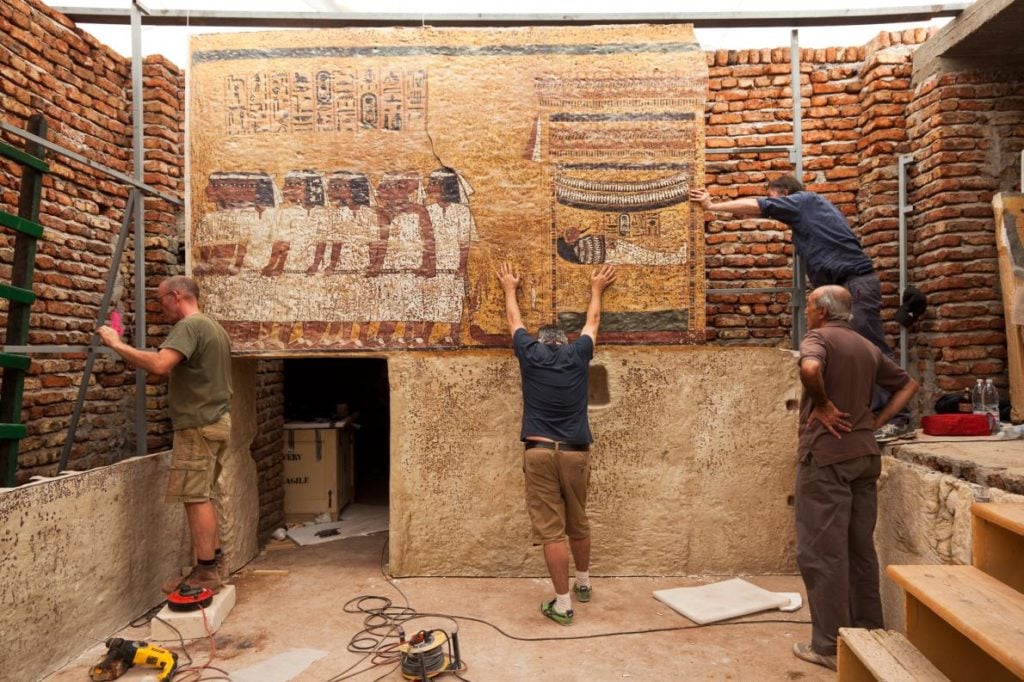Art & Exhibitions
Technology Lets Archaeologists Clone King Tut’s Tomb


Sarah Cascone

Archaeologists have a tricky job, studying extremely fragile ancient relics without damaging irreplaceable artifacts. New technology allows scientists to create incredibly convincing, forensically-analyzed 3-D copies of important archaeological sites that can scarcely be distinguished from the originals. The most ambitious reproduction of this kind to date is an exact replica of King Tut’s tomb, reports National Geographic.
Utilizing a number of state-of-the-art technologies including laser scanning, the project, which took five years and cost $690,000, has created a stunning facsimile of the 3,245-year-old tomb, which was re-discovered in 1922. Now, tourists can get a fascinating glimpse into ancient Egypt without endangering a priceless cultural artifact.
As if that wasn’t impressive enough, the growing field of “cyber archaeology” can also be used to create convincing 3-D digital projections of important sites that will allow for a virtual walk-through “inside” a video.